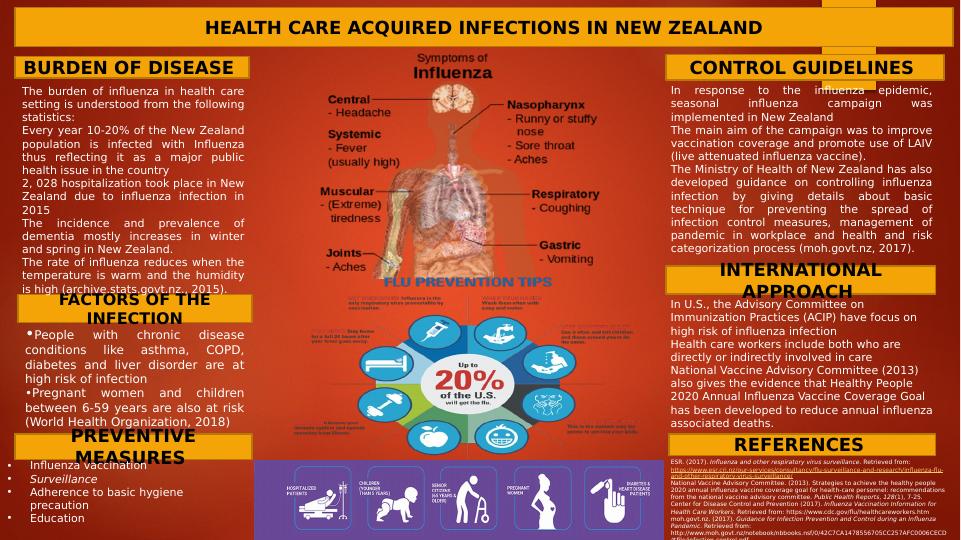Health Care Acquired Infections in New Zealand: Burden of Disease and Control Guidelines
1 Pages422 Words209 Views
Added on 2023-06-01
About This Document
This presentation discusses the burden of influenza in New Zealand and the preventive measures to control it. It provides statistics on the incidence and prevalence of influenza and dementia in the country. The presentation also covers the factors of infection and the international approach to controlling influenza. It concludes with references for further reading.
Health Care Acquired Infections in New Zealand: Burden of Disease and Control Guidelines
Added on 2023-06-01
ShareRelated Documents
End of preview
Want to access all the pages? Upload your documents or become a member.
Report on Influenza Infection
|3
|383
|70
Debate on Mandatory Flu Vaccination
|5
|939
|452
Best Practices in Strategic Planning
|8
|1762
|20
H1N1 Influenza: Global Outbreak and Response
|13
|5259
|22
PHCM9050 – Immunisation Policy and Practice
|11
|2928
|53
Interventions to Increase Influenza Vaccination Rates of those 60 years and Older Living in the Community
|4
|904
|114

